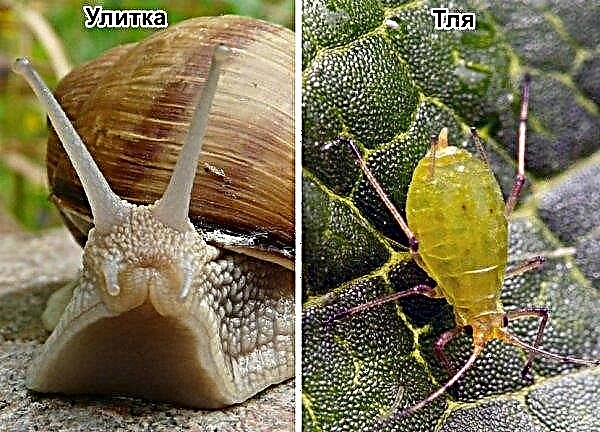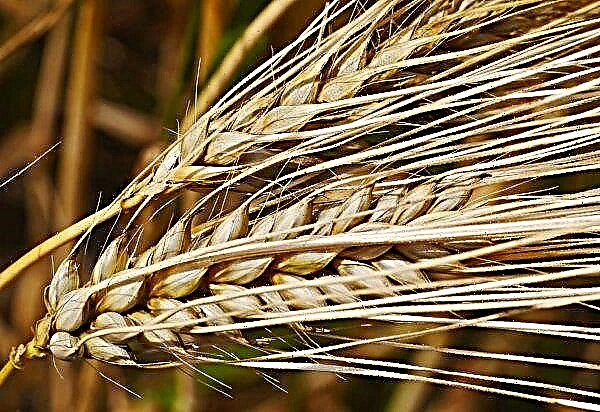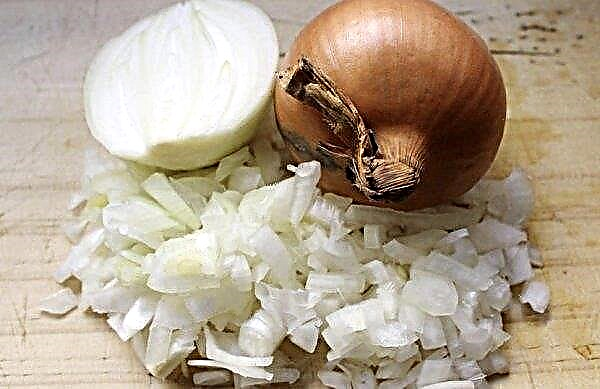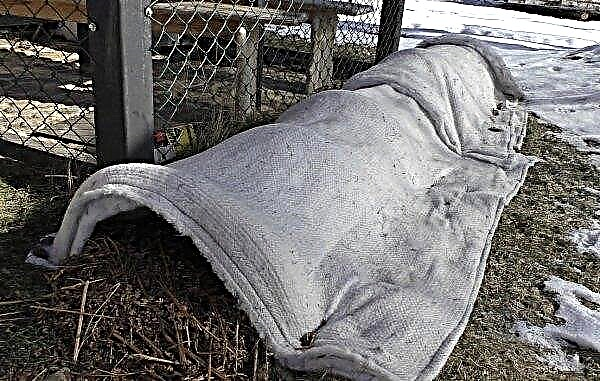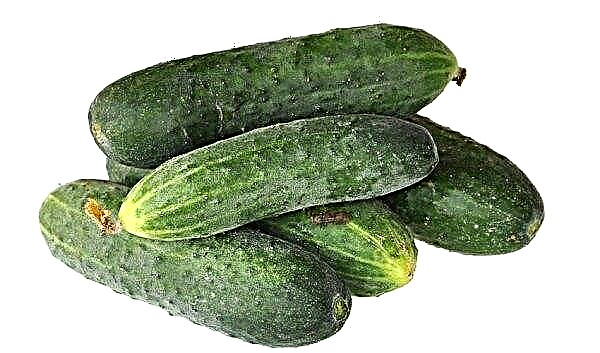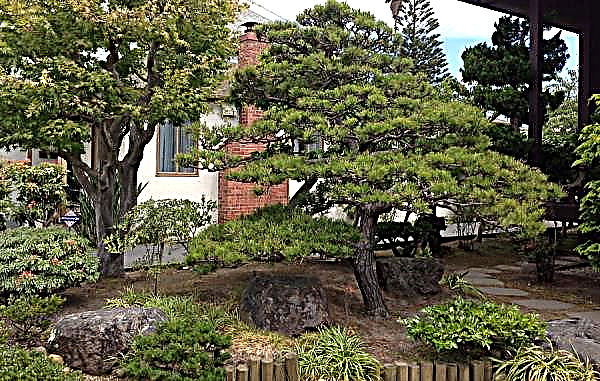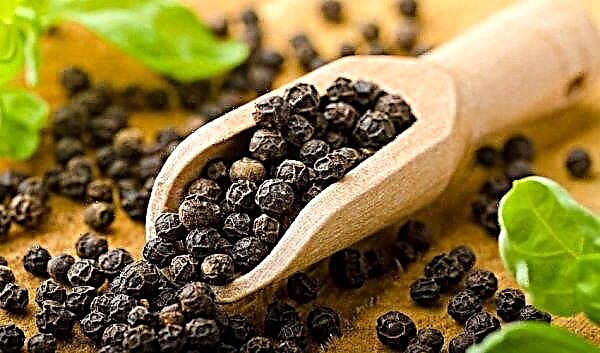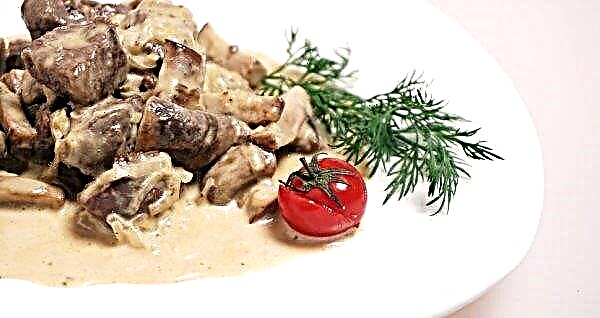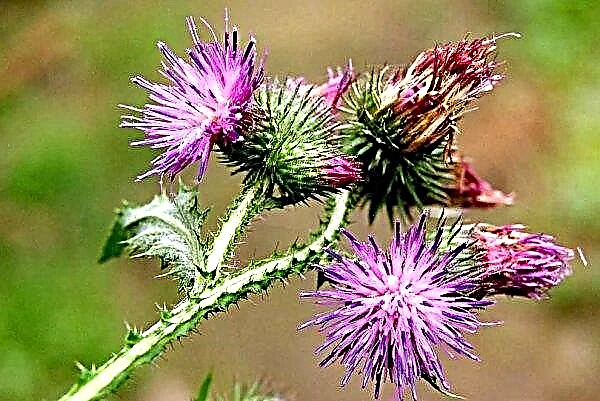It is believed that most bulbs, including gladioli, should be dug out for the winter, otherwise the tubers will simply freeze. This statement is only partly correct, since in the southern regions flowers can also be planted before winter. In addition, botany and breeding do not stand still, and currently there are quite a few new varieties that have quite good frost resistance for this species.
Why transplant gladioli
Gladioli are not only too capricious plants, but still they require some care and attention. One of the procedures without which it is impossible to grow these beautiful flowers is a transplant.

There are several reasons why you need to transplant gladioli:
- fenders are bulb plants. Like most of these flowers, they should be dug up for the winter, otherwise they will simply freeze;
- Do not grow fennel in one place for more than two seasons. In the third year, the plant needs to be transplanted to a new place;
- every three years it is also advisable to change the type of soil where flower beds are broken. For example, after two years of cultivation on sandy loam, it is worth transplanting plants on light clay soil;
- it is worth carrying out the procedure of replanting flowers grown from large bulbs from those born from children, since large ones inhibit the growth of babies.
Did you know? Currently, there are more than 10 thousand varieties of gladiolus, most of which was bred from only 7 species of plants, originally growing in southern Africa. A flower came to the Old World in the 17th century, and about a hundred years ago, the American breeder A. Kunder brought out the first corrugated fenders.
Is it possible to transplant blooming gladioli
During flowering, gladiolus transplantation is highly undesirable. However, this rule is relevant for most plants in general. At this time, any representative of the flora is in exertion of all his strength, excess stress can harm him.
However, there are different situations when it is urgent to transplant a flowering plant, for example, when it detects diseases in a particular area, especially viruses. In this case need to perform the procedure by transshipment.

Do it this way:
- Dig a flower in such a way that it grabs a sufficiently large lump of earth with the root. All plant roots should be inside a coma.
- With the least concern, transfer the plant to a new, previously prepared place and place it in the hole.
When transplanted
There is a rule according to which, the best time for this procedure is a warm sunny day, about 30-40 days after flowering. They dig up plants in the summer, or in the early autumn.
If you live in the southern regions of Russia or Ukraine, you can transplant a flower in the winter. In gladioli, the root grows normally at 10–14 ° С, at 20–24 ° С shoots develop quite well.
Important! In the event that the gladiolus bulb is solid, healthy, but its surface is covered with dark dots, these are signs of fusarium. Do not rush to throw away such planting material, it can be cured - carefully remove the stains with a knife, treat the cut points with green
For the best preservation of tubers, the most acceptable temperature is 3–9 ° С. This temperature regime best contributes to the preservation of the bulb, while, subsequently, the flower will normally grow and develop. However, already at -2 ° С tubers die. Therefore, if you plan to plant plants in the winter, it is advisable to do this where the soil does not freeze to the specified temperature. Or you need to take care to prevent freezing of the soil to -2 ° C.

Autumn Transplant Rules
Autumn transplantation of gladioli to a new place, permissible only if essential. In principle, this event, with the exception of the southern latitudes, is not recommended for autumn. Still, it is a thermophilic culture, which, in addition to minimal frosts, very poorly tolerates excessive moisture. So the reason for the autumn transplant must be very significant, for example, an outbreak of the disease in the same place.
A place for growing flowers needs to be prepared in advance, 2-3 weeks before the planned planting procedure. The place under the flowerbed should be well lit by the sun, have protection from the wind. Wet lowlands are not suitable for these beauties either, the most acceptable option is a loose, rather heavy substrate that absorbs moisture well.
Did you know? In the second and third centuries BC, in Greece and Rome, gladioli were destroyed, considering them weeds in cereal fields. Then the flower was not cultivated, it was exclusively wild.
In that case, if the gladiolus babies have a sufficiently dense peel, it can endure short-term frosts up to -4 ° С. Skewer babies (small tubers, up to 1 cm in diameter, formed at the base of a mature bulb) are stored much better than mature tubers. In addition, large children are able to bring bulbs of the first analysis and have almost one hundred percent germination

When planting in autumn, follow some simple rules, following them will help you grow healthy flowers:
- Digging corms should be when the stems and leaves of the flowers turn yellow. Bulbs must be dried, examined for signs of disease or their pathogens.
- Corms need to be planted before the earth has cooled.
- A good quality bulb, immediately before planting, should have root compaction (up to 3 mm in size) and sprouts of 6–9 cm in size. If shoots do not appear on the surface of the corm, during the period of preparation and germination, they are discarded.
- 15–20 days before the planned planting, the top crust should be removed from the dug bulbs. Healthy planting material has a shiny surface, slightly pecking buds and roots that have begun to break through. If you see a corm with signs of dryness, soft, covered with mold or ulcers, it should be burned.
- Tubers selected for planting should be kept for 2-3 days in a warm place, well-lit, but without direct sunlight.
- If the corms are large, it is likely that they have several kidneys, in addition to one main. In this case, from one bulb you can get a few more crayons that can bring a good harvest.
- Corms are cut into several parts. Those smaller are 3-5 parts, slightly larger - 6-10. Of the largest, you can get 10-12 bulbs. The main thing when cutting is to make sure that on each new bulb there is one or more kidneys.
- Ready planting material is dried, if the kidneys are covered with a thick crust, it is carefully cut. Then you need to put the bulbs overnight in a 0.1% solution of potassium permanganate, for disinfection.
- A couple of days before planting, corms are treated with growth stimulants, for example, Heteroauxin, succinic acid, Epin, etc. Directly before planting, the onions are sprinkled with ash.
- The recommended distance between adjacent holes is 17–20 cm. The holes must be dug so that their depth does not exceed 5 cm. There is also a rule according to which the depth of the hole should be equal to three bulb diameters. At the bottom of the hole is poured, with a layer of 1-1.5 cm, river sand with the addition of humus and superphosphate. On a mixture of sand with fertilizers spread planting material, kidney up. A small layer of peat is placed on top of the corms, it will help retain moisture, and sprinkle with earth.
- They complete the planting procedure with quite plentiful warm watering.

Summer Transplant Rules
Transplantation of gladioli in spring and summer is practically no different from autumn. The main rule for the event is that the soil should warm up sufficiently, to + 10 ° C at a ten-centimeter depth. The specific planting dates depend on your region, in the south you can plant in early April, in Siberia - a month later.
How to transplant gladioli to another place
The best way to transfer the skewer to another place is the traditional one, in which bulbs are dug up in autumn or late summer, dried, stored all winter, and planted in spring. The procedure is not only quite simple, but, if everything is done correctly, gives an almost complete guarantee that next summer you will enjoy a beautiful view of the flowering of your gladioli.
Video: How to dig and store gladioli
With such a transplant, both large corms and children are used.
- Reproduction by children has several advantages, among which the following can be distinguished:
- use for transplanting children helps to preserve and update your collection of flowers;
- You can significantly increase the number of gladioli grown in the garden;
- Thanks to this method of cultivation, the skewer is better adapted to new conditions, and young plants have stronger immunity.
Important! The period of natural rest of the gladiolus corms is approximately 5–6 weeks, at this time it will not germinate under any conditions. After this time, the bulb begins to wake up so that it does not sprout, be sure to observe the temperature regime (up to +9°WITH).
Perform a transplant in this way:
- It is better to dig bulbs on a nice warm day, about 1–1.5 months after flowering. First they dig up early varieties, then later ones. If the plants were attacked by black or brown spotting, they need to be dug up even earlier in order to protect against the occurrence of other diseases.
- Dry plant residues (stems and leaves) can be removed immediately using a scythe or garden sickle. And you can cut them with secateurs from already dug bulbs. It is more advisable to perform this procedure after digging in order to immediately remove the roots. Thus, you do not have to perform twice the same operation.

- Gently remove soil residues from corms, separate the children. Bulbs are placed in a large sieve, or in a container with a small cell and washed under running water.
- The next stage of bulb preparation is antimicrobial treatment. For this, corms are placed for half an hour in a solution of fundazole (1%), then washed again and dipped in a 2% solution of potassium permanganate. Then lay out in one layer for drying, for 3-4 days.
- After a specified time, planting material is laid out in boxes previously laid out by newspapers. Boxes are placed in a room with a temperature of 24–28 ° C, periodically turning over the bulbs. After 1.5–2 weeks, the container should be moved to a room with a lower temperature - 17–23 ° С. After a month, the bulbs are sorted and cleaned of the upper scaly layer. Corms prepared in this way are stored all winter at temperatures up to + 9 ° C and low air humidity (preferably up to 65%).
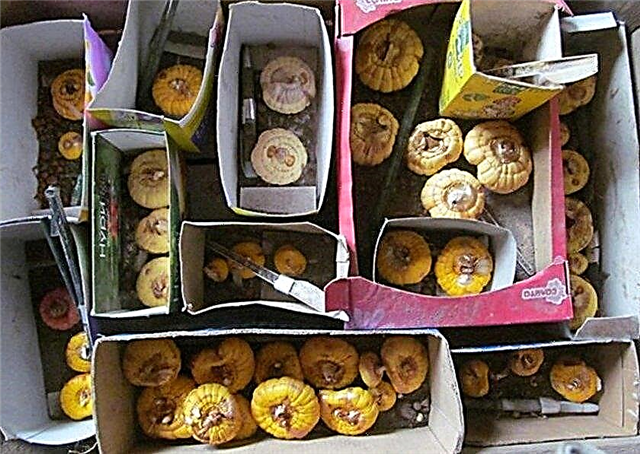
- Kids should be sorted. They are separated by approximately the following criteria: medium, up to 7 mm in diameter, and large - all the others. The tubers are dried for a couple of days, poured into paper bags and stored in a dry place at temperatures up to + 6 ° C. At higher temperatures, planting material may not rise well in spring. You can use a refrigerator to store tubers.
- With the advent of spring, when the soil warms up to the above indicators (+ 10 ° C at a depth of 10 cm), you can start planting flowers in warm and prepared soil. If you prepared and stored the bulbs and the kids correctly during the winter, almost everything should come up.

What affects the flowering time
Unfortunately, despite its beauty, gladiolus has a very short flowering period - no more than two weeks. Under normal conditions, the skewer can bloom, depending on the variety and some other circumstances, in July - August, some late varieties - in early autumn.
At what time gladioli can bloom, factors such as planting time, variety, size and degree of health of corms influence. The later the plant is planted, the later it will begin to bloom. Basically, planting a certain number of children or tubers every 12-15 days in April - May, it is possible to extend the flowering of fenders almost throughout the summer (July - August).
Important! So that the skewer grows faster and for better budding, apply phosphorus top dressing. In addition, during the formation of buds and during flowering, the plant really needs potassium, for example, potassium salt or nitrate.
In addition, weaker bulbs give later shoots, and, accordingly, begin to bloom later. And, of course, circumstances that are independent of us, such as weather conditions, affect flowering time.
For instance, growing a skewer in greenhouses or pots, you can slow down its development, and, accordingly, postpone the flowering time, lowering the air temperature. The same thing happens in nature: in cold spring and summer, flowering should be expected later. If in May - July there is hot, moderately dry weather, most likely, gladioluses will bloom earlier.

Gladioli are thermophilic flowers that are extremely poor in cold tolerance. Minimal frosts are detrimental to the bulbs, so it is better to plant the plants in the most favorable time for this - in the middle of spring. If, for some reason, you still have to carry out the procedure in the fall, remember that there is a great enough risk of losing all corms in the winter. So resorting to planting gladioli in the winter should only be in case of emergency.




